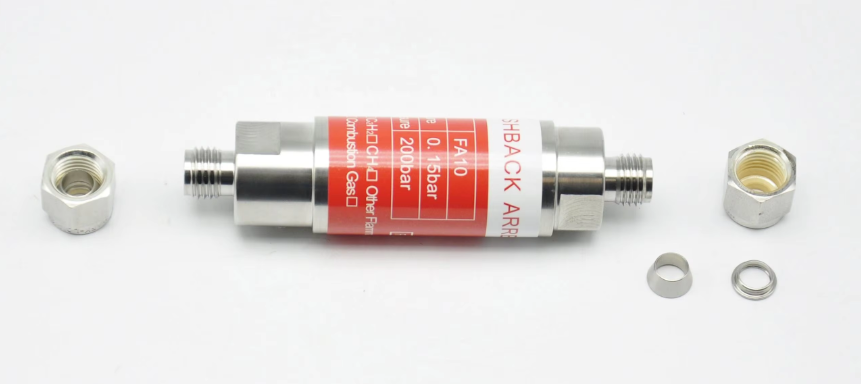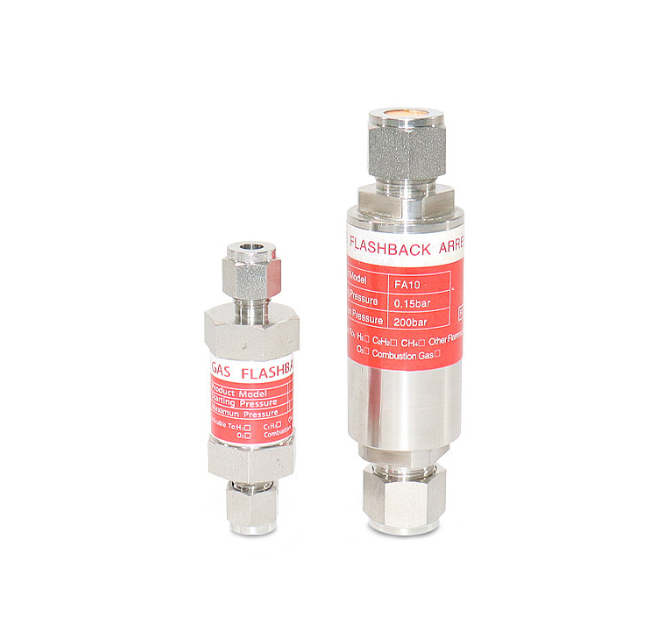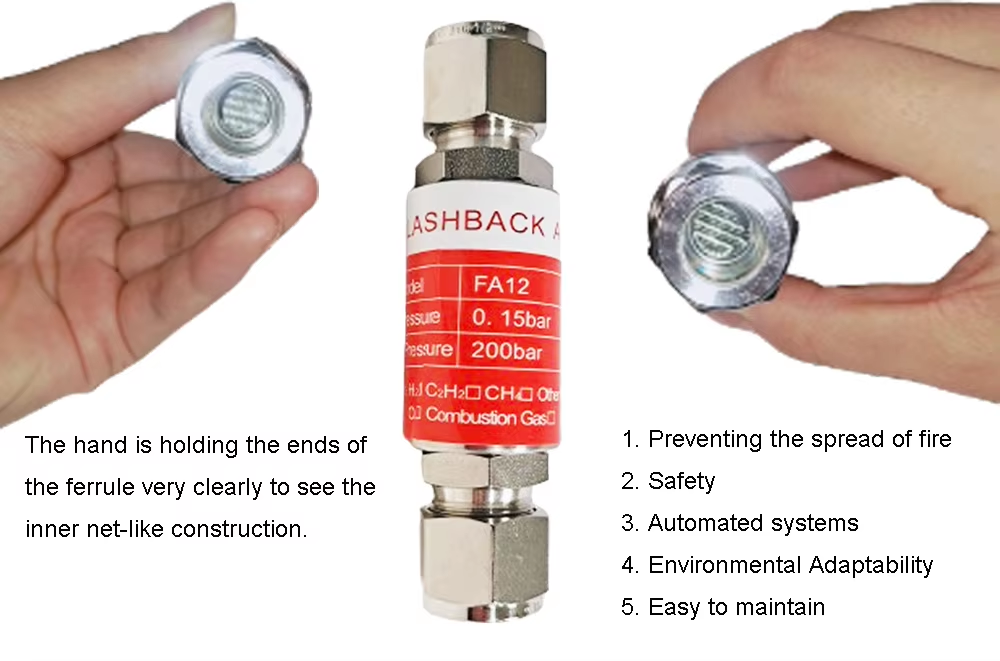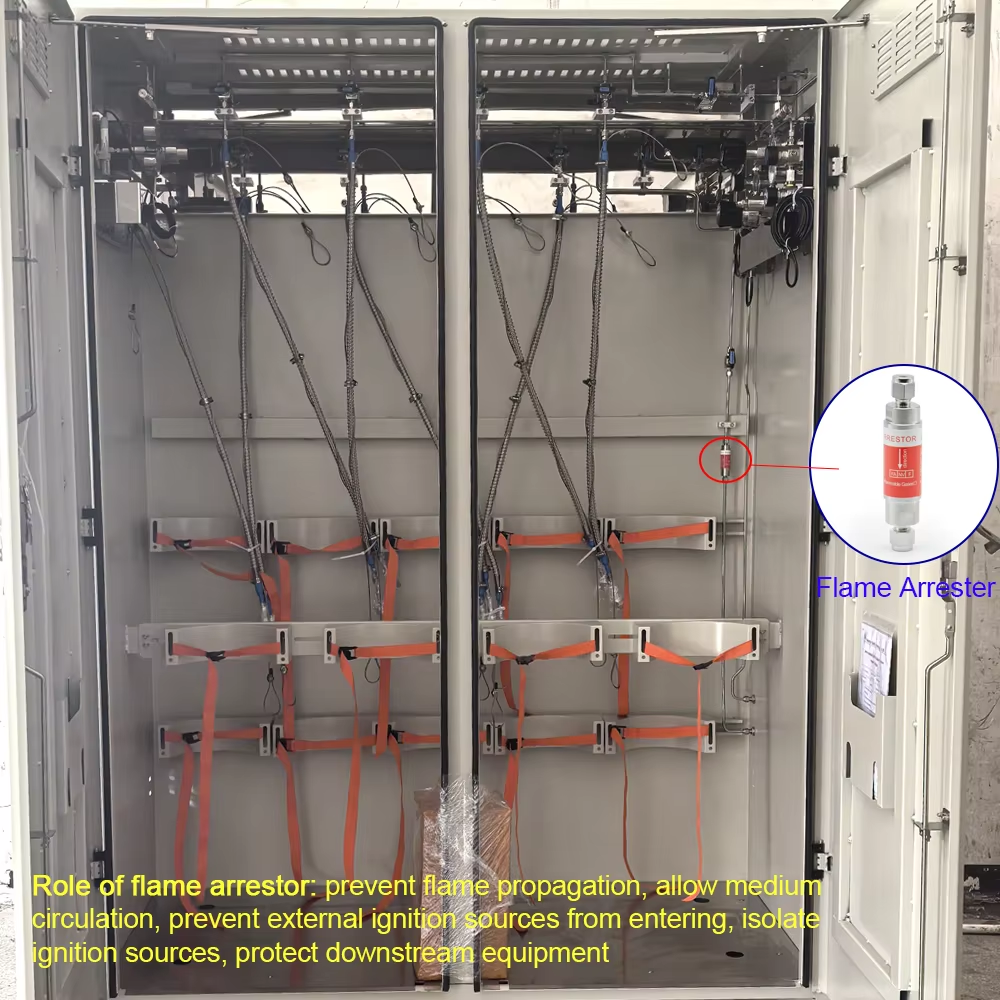Flame Arrester is a safety device that blocks the spread of flames through metal flame arresting elements and is used in flammable gas/liquid piping systems.
Working Principle: Utilizes the slit effect of metal corrugated plates or sintered mesh to quickly absorb heat and extinguish flames.
Features
Passive Protection: Flame arresters are passive protection devices, which means that they do not require any external power source or activation mechanism to function. They work by interrupting the flame propagation and quenching it, preventing it from spreading further.
Material: Flame arresters are made of materials that are resistant to high temperatures, corrosion, and chemical reactions. Some of the common materials used for flame arresters include stainless steel, aluminum, brass, and other alloys.
Types: There are different types of flame arresters available, each designed for specific applications and requirements.
These include deflagration arresters, detonation arresters, and vent-line flame arresters.
Installation: Flame arresters are designed to be easy to install and maintain. They can be installed inline with the pipeline or equipment, and can also be retrofitted into existing systems.
High Pressure Rating: Flame arresters are designed to withstand high pressures and can be rated for pressures up to several thousand PSI.
Compatibility: Flame arresters need to be compatible with the type of gas or liquid being transported, as well as with other safety devices such as pressure relief valves and explosion-proof equipment.
Maintenance: Flame arresters require regular maintenance and inspection to ensure their proper functioning and to identify any potential issues or damage.
Most Customers Choose To Use Flame Arrester For The Following Reasons:
Preventing the spread of fire: it is to stop the spread of flame in the pipeline or equipment. They can confine a fire to a specific area, thus preventing further expansion and reducing the threat of fire to people and property.
Safety: are usually made of refractory materials with good fire resistance. They can withstand high temperatures and flames, providing additional safety protection.
Automated systems: are used in integration with automated systems or fire alarm systems. When a fire is detected, the automation system can trigger the operation of the ferrule flame arrestor, shutting off the fuel supply or triggering other measures to quickly respond and contain the fire.
Environmental adaptability: They can be adapted to different pipework and equipment types. They can be customised and fitted to specific application requirements to ensure optimum adaptability and performance.
Ease of Maintenance: Typically have a simple construction and operation that makes them easy to install and maintain. Typically, they do not require additional energy supply or complex maintenance procedures.
Regulatory Requirements: In some industries and locations, the use of ferrule flame arresters may be required by regulations or safety standards. These requirements are designed to ensure fire safety and to protect people and facilities from the hazards of fire.
Post time: Oct-25-2025


